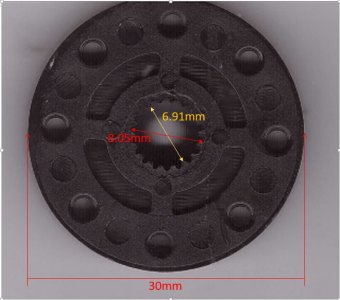- Joined
- Feb 20, 2023
- Messages
- 20
Hi All
After getting my cheap Chinese mini lathe fixed, I had lots of ideas but eventually just fixed the controller board on it, I am looking at doing my first real project on it.
I am into robotics so use a lot of servos and what I want to be able to do is make custom servo horns to suit my designs, I can do basic milling by putting a milling bit in the lathe chuck then use the compound table to hold the piece and do basic milling that way, but what I have no idea about is how to create the internal gear that mates with the servo gear, this also has to be a tight fit unlike gear to gear where play is need for movement., the internal gear is also very small around 8mm in diameter.
Now I know the basics, drill a hole to the diameter of the peak of the gear, then use a means to broach.
Looking for advice on the best way to do this.
Cheers
DJ
After getting my cheap Chinese mini lathe fixed, I had lots of ideas but eventually just fixed the controller board on it, I am looking at doing my first real project on it.
I am into robotics so use a lot of servos and what I want to be able to do is make custom servo horns to suit my designs, I can do basic milling by putting a milling bit in the lathe chuck then use the compound table to hold the piece and do basic milling that way, but what I have no idea about is how to create the internal gear that mates with the servo gear, this also has to be a tight fit unlike gear to gear where play is need for movement., the internal gear is also very small around 8mm in diameter.
Now I know the basics, drill a hole to the diameter of the peak of the gear, then use a means to broach.
Looking for advice on the best way to do this.
Cheers
DJ


